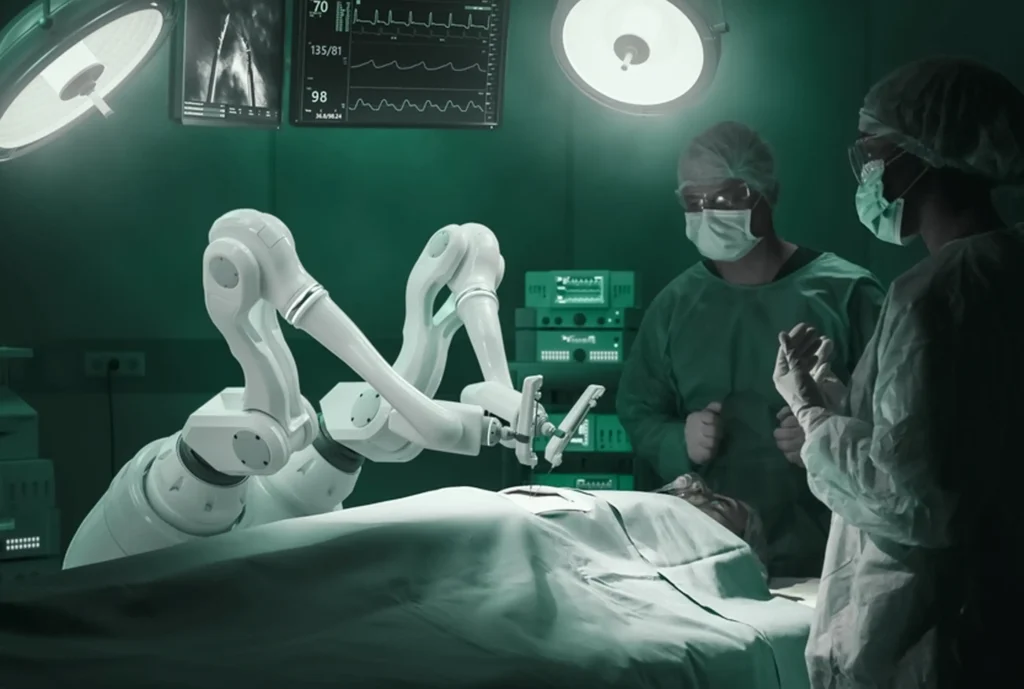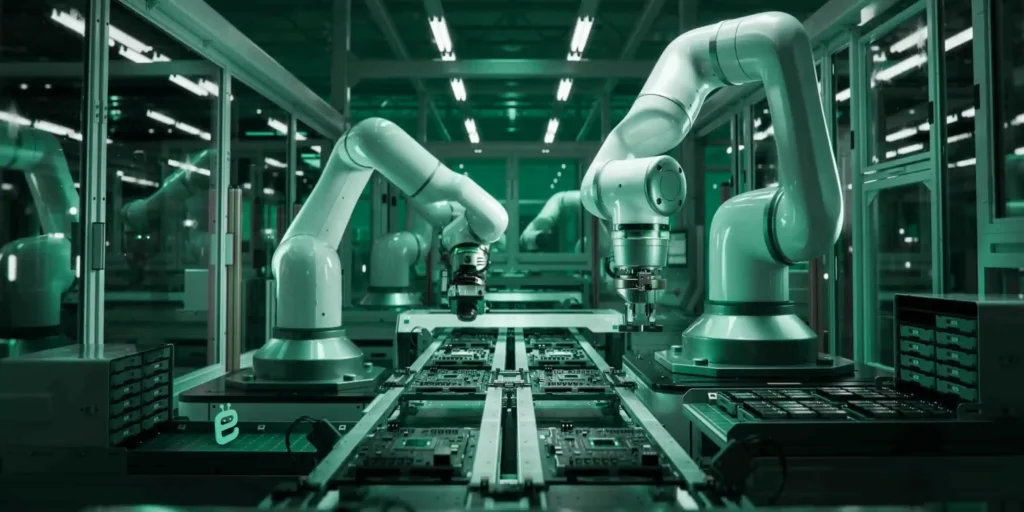Advanced robotics is an unexpectedly evolving area that encompasses the improvement and application of state-of-the-art robotic systems. These present-day technologies are designed to perform complicated tasks with a high degree of accuracy, performance, and independence.
Introduction

At its core, advanced robotics combines elements of engineering, PC technological know-how, artificial intelligence, and mechanical layout to create sensible machines that could interact with their environment and perform a huge range of duties. These robots are ready with superior sensors, actuators, and management structures that permit them to examine their environment, make decisions primarily based on the information amassed, and execute moves accordingly.
The applications of advanced robotics are large and diverse. From production industries to healthcare settings, those robots have the potential to transform diverse sectors. In production, they can automate repetitive tasks like meeting strains or handling hazardous materials in environments that are incorrect for human beings. In healthcare, advanced robots can help surgeons with complicated methods or offer companionship and support for elderly individuals.
The discipline of advanced robotics holds colossal promise for improving performance, safety, and productivity across multiple industries. As technology continues to enhance at an exponential rate, we can assume even greater modern applications of robotics in the future.
The Evolution of Advanced Robotics and Key Technological Innovations
The area of advanced robotics has witnessed widespread improvements over time, transforming numerous industries and shaping the future of the era. Understanding the records of advanced robotics helps us appreciate the important technological innovations that have pushed this discipline forward.
In the early days, robots were usually utilized in commercial settings to automate repetitive duties. With time, advancements in artificial intelligence (AI), machine learning, and sensor technologies have enabled robots to grow to be more sophisticated and flexible.
Collaborative robots, or cobots, have emerged as a game-changer in business settings. These robots work alongside people accurately by means of sensing human presence or utilizing pressure-feedback management systems. Cobots increase productivity with the aid of automating repetitive tasks while ensuring human-robotic collaboration for more problematic operations.
Robotic belief has stepped forward with advances in sensor technologies. Robots can now look at their surroundings using diverse sensors, including cameras, lidar (light detection and varying), and radar. This enables them to navigate independently through complex environments, even as they head off barriers.
Another widespread development is the integration of AI algorithms into robotic structures. This permits robots to learn from their surroundings and adapt their behaviour accordingly. Machine learning techniques permit robots to analyse data, make choices, and enhance their performance over the years.
One notable development in advanced robotics is the development of humanoid robots. These robots are designed to resemble people in appearance and behaviour, permitting them to carry out complicated tasks that require competence and interplay with their environment. Humanoid robots have discovered packages in areas including healthcare, training, and leisure.
The evolution of advanced robotics has additionally brought about improvements in robotic capabilities, including voice reputation, natural language processing, facial popularity, and gesture management. These functions allow seamless interaction among human beings and robots in unique contexts, like customer support or non-public help.
The records of advanced robotics showcase an exquisite journey marked by technological innovation that has transformed industries across the globe. From early industrial automation to humanoid robots with AI competencies, those advancements continue to form the future of robotics, promising exciting opportunities in various fields.
Applications of Advanced Robotics in Various Industries
Advanced robotics has revolutionized diverse industries, imparting a huge variety of applications and benefits. Industrial robotics applications have transformed production tactics, enhancing performance, precision, and productivity. These robots can perform repetitive duties with high accuracy, decreasing human error and increasing manufacturing output.
In the field of medication, improvements in scientific robotics have paved the way for reworking techniques and treatments. Surgical robots allow surgeons to perform complicated surgical procedures with stronger precision and minimal interference. They offer advanced visualization, artistry, and management, leading to higher patient outcomes.
The programs of advanced robotics amplify beyond those industries as well, from agriculture to logistics and even space exploration. As generations keep improving swiftly, we can assume, in addition, innovation in robotic talents throughout various sectors.
Robots prepared with artificial intelligence (AI) algorithms can examine information and make real-time selections to optimize operations similarly. This integration of AI allows for predictive protection scheduling and adaptive control systems.
Robotic automation in manufacturing has substantially modified the landscape of production lines. Robots can handle hazardous or physically stressful obligations that can pose dangers to human employees. They additionally excel in repetitive assembly tactics, ensuring consistent quality while decreasing labour fees.
The Impact of Advanced Robotics on the Job Market and Society at Large
The rapid advancement of the robotics generation has raised crucial questions about its impact on the job marketplace and society. The socioeconomic implications of advanced robotics are some distance-reaching, with concerns approximately job displacement and the potential disruption to diverse industries.
The impact of advanced robotics on the process marketplace and society at large is a complicated difficulty with both superb and bad implications. It requires careful consideration of the socioeconomic results as well as ethical pointers to ensure stability between technological progress and societal well-being.
It’s critical to notice that advanced robotics additionally gift possibilities for innovation and financial boom. As positive jobs turn out to be automatic, new roles can also emerge that require human competencies, which include creativity, crucial questioning, and emotional intelligence.
Ethical issues additionally come into play while discussing advanced robotics. As robots emerge as extra capable, there’s a need to make certain that they’re programmed with moral guidelines and cling to concepts that prioritize human well-being and safety. This consists of issues including privacy, duty, and the capability for self-sufficient choice-making by means of robots.
One of the primary worries is that robots and automation ought to update human workers in positive tasks, leading to process losses in sectors traditionally reliant on manual labour. This raises questions about how people will adapt and find new employment opportunities in an increasingly automated world.
Challenges and Limitations Faced by Advanced Robotics Today
Despite the improvements in the robotics era, there are nevertheless several demanding situations and obstacles that superior robots face nowadays. One of the principal barriers is the complexity of programming robots to perform elaborate movements. While robots can perform repetitive responsibilities with precision, programming them for complicated moves may be a time-consuming and difficult method.
Safety issues additionally pose a tremendous challenge in the development and implementation of robot structures. As robots emerge as more self-sustaining and interact with humans in diverse settings, ensuring their protection will become essential. There is a need for robust protection protocols and measures to prevent injuries or damage to people during human-robot interactions.
While advanced robotics has made enormous strides over time, there are nevertheless hurdles to overcome before it can absolutely recognize its potential in exceptional sectors.
Researchers are actively working on overcoming these demanding situations by developing extra-state-of-the-art algorithms for robot manipulation, enhancing safety functions, enhancing perception talents, and addressing the cost-effectiveness of maintaining advanced robot structures.
Current limitations in robot notion and knowledge of complicated environments restrict their ability to operate efficaciously in dynamic or unpredictable conditions. Robots may additionally battle to adapt to changing conditions or deal with surprising limitations.
Advanced robots regularly require specialized preservation and maintenance, which can be highly expensive and time-consuming. This can prevent their widespread adoption in various industries.
The Future of Advanced Robotics: Trends and Predictions for Upcoming Robots
The area of advanced robotics has been swiftly evolving, bringing approximately exciting possibilities for the future. From business automation to healthcare help, robots have become more state-of-the-art and capable. In this section, we can explore the tendencies and predictions for the next day’s robots, focusing on the development of advanced robotics and their potential packages.
The destiny of advanced robotics seems promising, with ongoing developments that push barriers and open new avenues for innovation. As generation keeps developing at an unprecedented pace, we can count on first-rate improvements to reshape industries while facilitating greater collaboration between people and machines.
Advancements in materials science are permitting the improvement of soft robotics, a subfield that focuses on creating flexible and adaptive robotic structures stimulated by biological systems. Because they can circulate more clearly than cutting-edge robots, these soft robots have the potential to transform industries like reintegration and synthetic limbs.
Robots will undoubtedly play a considerable role in healthcare. They could help in surgeries by providing moves or support elderly people with daily duties, together with medicine reminders or mobility help. Robots can be hired in risky environments like disaster reaction scenarios or deep-sea exploration where human intervention is challenging.
Another widespread trend is the expansion of robotic packages beyond traditional industrial settings. While robots have long been utilized in production procedures, they’re now being deployed in various sectors, such as healthcare, agriculture, logistics, and even private assistance. The future holds massive potential for human-robotic collaboration, where robots can work alongside humans to enhance productivity and protection.
One outstanding trend in advanced robotics improvement is the mixing of synthetic intelligence (AI) and system mastering algorithms. This lets robots adapt and learn from their environment, making them more bendy and able to handle complicated responsibilities. As AI continues to develop, we will count on robots to become even more sensible and efficient in their operations.
FAQ
Advanced robotics refers to the use of present-day technologies, such as synthetic intelligence, device learning, and complex sensors, to create robots capable of complex responsibilities that might be unbiased.
Advanced robotics has programs in fields like healthcare, manufacturing, area exploration, or even ordinary life.
Advanced robots use machine learning algorithms to analyse their studies and adapt to new situations. They can examine facts, make decisions, and improve their overall performance over the years.
Challenges consist of moral issues, technical limitations, and the need for strong safety protocols to save you injuries when robots paint along humans.
While advanced robotics can automate responsibilities, they also create new opportunities and industries. The impact on jobs varies by sector, with a few jobs being changed at the same time as others are stronger or created due to advancements in robotics and automation.
Conclusion
Recognizing the capacity of advanced robotics holds superb promise for developing a better robot the next day. These state-of-the-art machines have the potential to revolutionize various industries and improve our lives in several ways.
By harnessing the electricity of advanced robotics, we will enhance productivity and performance across sectors, including production, healthcare, agriculture, and transportation. These robots can carry out responsibilities with precision and accuracy that surpass human talents. They can manage repetitive or dangerous obligations, releasing humans to consciousness of extra complicated and creative plans.
